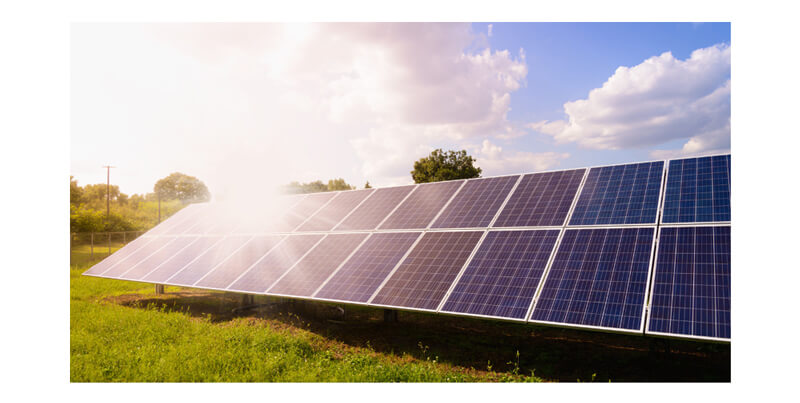Content
As solar energy becomes a more accessible and sustainable energy source, proper installation is crucial to ensure safety, efficiency, and long-term reliability. One essential aspect of solar panel installation is grounding. Grounding solar panels reduces the risk of electrical faults and protects against lightning strikes or other unforeseen electrical surges. However, determining the optimal location and method for grounding requires careful consideration of technical, environmental, and regulatory factors. This article will explore the key elements involved in choosing where to ground your solar panels, focusing on best practices and practical insights.

Grounding is the process of creating a safe path for excess electrical energy to dissipate into the earth. In solar energy systems, grounding serves two primary functions:
- Safety from Electrical Faults: Proper grounding ensures that if a fault occurs, such as a short circuit, the current will be directed safely into the ground, preventing injury and protecting equipment.
- Lightning Protection: Grounding mitigates the effects of lightning strikes by providing a low-resistance path for the electrical energy to travel, reducing the chance of severe damage to the system.
Without adequate grounding, solar panels are more vulnerable to malfunctions, potentially endangering both property and individuals. Understanding where and how to ground your system is critical for safe operation.
1. Type of Solar Installation (Ground-Mounted vs. Roof-Mounted)
The type of installation plays a significant role in where grounding should occur.
- Ground-Mounted Systems: These systems often require a grounding rod driven into the soil near the panels. The rod must be placed deep enough to ensure consistent contact with the earth, typically following local regulations that specify grounding rod depth (e.g., 6 to 8 feet).
- Roof-Mounted Systems: For panels installed on rooftops, the grounding process involves connecting the panels to the building's existing grounding system. In these cases, a grounding wire links the metal frames of the panels to the structure’s electrical grounding system. Care must be taken to ensure a continuous, uninterrupted grounding connection throughout the installation.
2. Soil and Environmental Conditions
The effectiveness of grounding rods in ground-mounted systems depends largely on soil composition and moisture levels. Different soils have varying electrical resistivity, influencing how well they conduct electricity:
- High Moisture Content: Wet soils, such as clay or loam, provide good conductivity, making them ideal for grounding.
- Dry or Rocky Soils: Dry sand, rocky ground, or areas with low moisture have higher resistivity, potentially reducing the effectiveness of grounding. In such cases, additional grounding rods or chemical grounding solutions may be required to enhance conductivity.
3. Distance from the Inverter and Other Equipment
For optimal grounding, it is crucial to minimize the distance between the solar panels, inverters, and grounding points. Long distances can lead to higher electrical resistance, diminishing the effectiveness of the grounding system. It is generally recommended to install the grounding rod as close as possible to the panels or inverter to reduce resistance and improve fault response times.
4. Compliance with Electrical Codes and Regulations
Adherence to local, national, and international electrical codes is essential when deciding where to ground your solar panels. In many countries, the National Electrical Code (NEC) or its equivalent provides detailed grounding guidelines. For example:
- NEC 690.41 requires that all exposed metal parts in solar installations be properly grounded.
- NEC 250 outlines general grounding methods, including requirements for grounding electrodes and wiring.
Always consult local building codes and electrical standards to ensure compliance, as improper grounding can lead to regulatory penalties or void equipment warranties.
5. Lightning-Prone Areas
If your solar system is installed in an area prone to lightning strikes, you should consider enhanced grounding strategies. Installing multiple grounding rods, surge protection devices, and bonding all metal components can improve safety. In these areas, it may also be advisable to install a lightning rod system that directs electrical surges safely into the ground.
1. Using Grounding Rods
In ground-mounted systems, grounding rods are the most common solution. These rods, typically made of copper or galvanized steel, are driven deep into the earth. A grounding wire connects the solar panel frames to the grounding rod, providing a direct path for electrical currents to dissipate.
2. Integrated Grounding Systems
Many modern solar panels come with pre-installed grounding points, streamlining the grounding process. These systems use bonding jumpers that connect adjacent panels, ensuring continuity. The bonded panels are then connected to a single grounding point, either at the inverter or an external rod.
3. Building Ground Integration
For rooftop systems, integrating the solar panels into the building’s grounding system is the preferred method. This process involves connecting the panel frames to the existing grounding system of the building, often through the electrical service panel.
Properly grounding solar panels is a fundamental part of ensuring their safe and efficient operation. Whether you are working with ground-mounted or roof-mounted systems, understanding environmental factors, minimizing resistance, and complying with codes are key to successful grounding.
4. Surge Protection Devices (SPDs)
In addition to grounding, it is advisable to use surge protection devices as part of your solar installation. SPDs help manage voltage spikes that can occur due to lightning strikes or sudden power fluctuations. When installed at the inverter and connection points, SPDs work in tandem with the grounding system to protect sensitive equipment, such as inverters and charge controllers, from damage.
- DC-side SPDs: Installed between the solar panels and the inverter, these protect the system from surges generated on the DC circuit.
- AC-side SPDs: Placed at the output of the inverter or within the main electrical panel, these shield the system from surges on the AC grid side.
While grounding dissipates stray currents, SPDs absorb and reroute high-energy spikes, complementing the grounding system for enhanced safety.
5. Bonding Panels and System Components
To ensure a continuous grounding path, bonding is essential. Bonding refers to the practice of electrically connecting all metal parts in the solar installation to prevent potential differences between them. For instance, the metal frames of individual panels, rails, mounting structures, and combiner boxes must be interconnected using grounding wires or bonding jumpers.
By bonding all components, you eliminate the risk of accidental shocks if someone touches two parts with different electrical potentials. Additionally, bonding helps direct stray currents or lightning strikes to the grounding system, minimizing the risk of dangerous arcing or equipment failure.

1. Grounding Tools and Equipment
To properly ground a solar system, you will need specialized tools and materials:
- Grounding Rods: Copper-clad or galvanized steel rods, typically 6–10 feet long.
- Grounding Wires: Copper or aluminum conductors, sized according to electrical code requirements.
- Bonding Jumpers: Flexible conductors that connect adjacent panels or metal components.
- Grounding Lugs: Mechanical fasteners that secure the grounding wire to the panel frame or structure.
- Multimeters and Ground Resistance Testers: Used to verify continuity and ensure the grounding system functions correctly.
2. Performing Regular Inspections
Even a well-installed grounding system can degrade over time due to corrosion, soil shifting, or environmental factors. Regular inspections are essential to ensure the continued effectiveness of the grounding. Key aspects to check include:
- Corrosion or Rust: Inspect grounding rods and connections for signs of oxidation or rust, which can impede conductivity.
- Loose Connections: Ensure all grounding lugs and bonding jumpers are securely fastened.
- Soil Conditions: For ground-mounted systems, monitor the soil moisture level and conductivity over time, especially in arid climates.
Testing the grounding system periodically with a ground resistance tester ensures that the system remains within safe operating limits. Local codes may specify the maximum acceptable resistance level, typically less than 5 ohms.
3. Ground Fault Protection and Monitoring
Some modern inverters come equipped with ground fault protection features that continuously monitor the grounding system for issues. If a ground fault is detected, the inverter will automatically shut down to prevent further damage or electrical hazards. Incorporating such inverters into your system can add an extra layer of safety and simplify troubleshooting.
In off-grid or hybrid solar systems, where solar panels are connected to batteries for energy storage, grounding becomes even more critical. Batteries, especially large lithium-ion systems, store significant amounts of energy, and any fault in the system can have severe consequences.
In these systems:
- The negative terminal of the battery bank is often grounded to prevent voltage imbalances.
- The inverter and charge controller must be properly grounded to manage surges and faults effectively.
- A separate grounding electrode may be installed for the battery bank to isolate it from the rest of the solar system.
For hybrid systems connected to the grid, ensure that both the solar and battery components comply with local electrical codes to avoid creating ground loops or potential safety hazards.
Proper grounding of solar panels is an essential part of ensuring the safety, durability, and efficiency of any solar energy system. By carefully evaluating the type of installation, environmental conditions, equipment layout, and relevant electrical codes, you can design an effective grounding system that protects both people and equipment. Beyond meeting regulatory requirements, a robust grounding system minimizes risks from electrical faults and environmental hazards, ensuring your solar investment performs reliably for years to come.
FAQs







